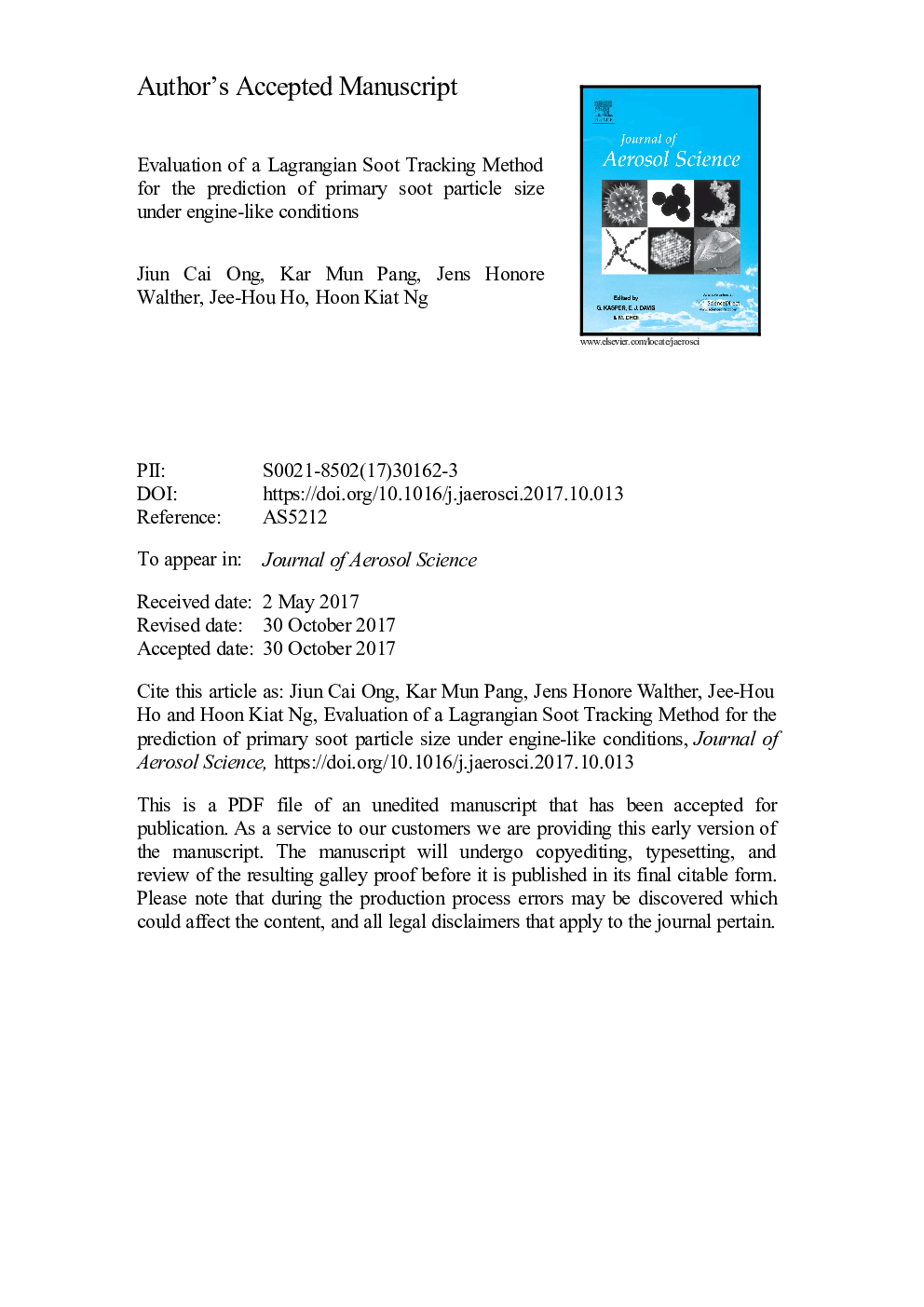| Article ID | Journal | Published Year | Pages | File Type |
|---|---|---|---|---|
| 8865326 | Journal of Aerosol Science | 2018 | 74 Pages |
Abstract
This paper reports the implementation and evaluation of a Lagrangian soot tracking (LST) method for the modeling of soot in diesel engines. The LST model employed here has the tracking capability of a Lagrangian method and the ability to predict primary soot particle sizing. The Moss-Brookes soot model is used here as the Eulerian method to simulate soot formation and oxidation processes. The inception, surface growth and oxidation models are adopted and modified such that the associated reaction rates can be computed using the Lagrangian approach. The soot nuclei are treated as Lagrangian particles when the mass of incipient soot exceeds a designated threshold value. Their trajectories are then computed using the particle momentum equation. The change of primary soot particle size is dependent on the modified Lagrangian surface growth and soot oxidation models. Performance of the LST model in predicting temporal soot cloud development, mean soot diameter and primary soot size distribution is evaluated using measurements of n-heptane and n-dodecane spray combustion obtained under diesel engine-like conditions. In addition, sensitivity studies are carried out to investigate the influence of soot surface ageing and oxidation rates on the primary soot particle size distribution. With the use of surface ageing, the predicted maximum primary soot particle sizes are closer to the experimentally measured maximum primary soot sizes. Also, the associated particle size distribution shows a lognormal shape. A higher rate of soot oxidation due to OH causes the soot particles to be fully oxidized downstream of the flame. In general, the LST model performs better than the Eulerian method in terms of predicting soot sizing and accessing information of individual soot particles, both of which are shortcomings of the Eulerian method.
Related Topics
Physical Sciences and Engineering
Earth and Planetary Sciences
Atmospheric Science
Authors
Jiun Cai Ong, Kar Mun Pang, Jens Honore Walther, Jee-Hou Ho, Hoon Kiat Ng,
